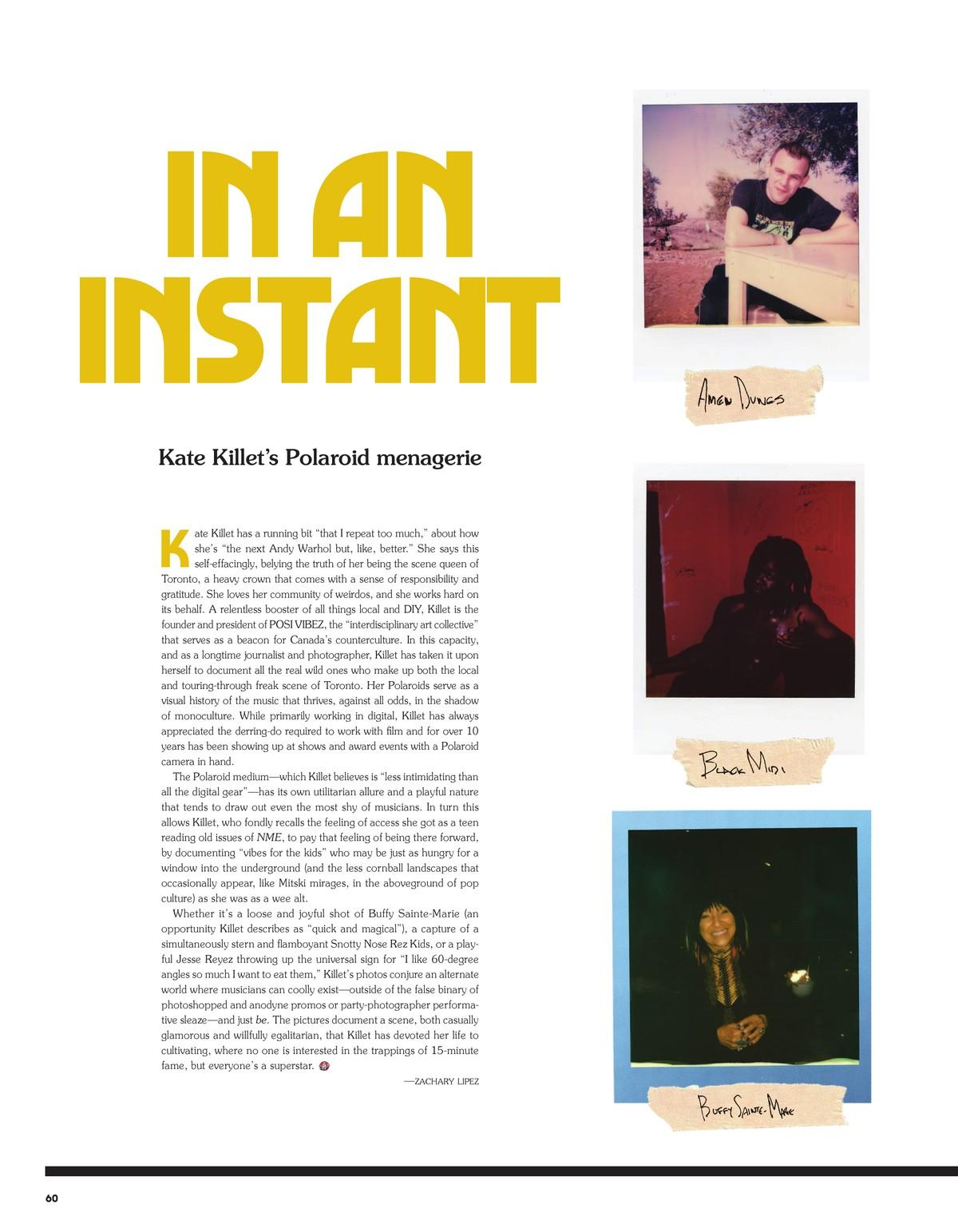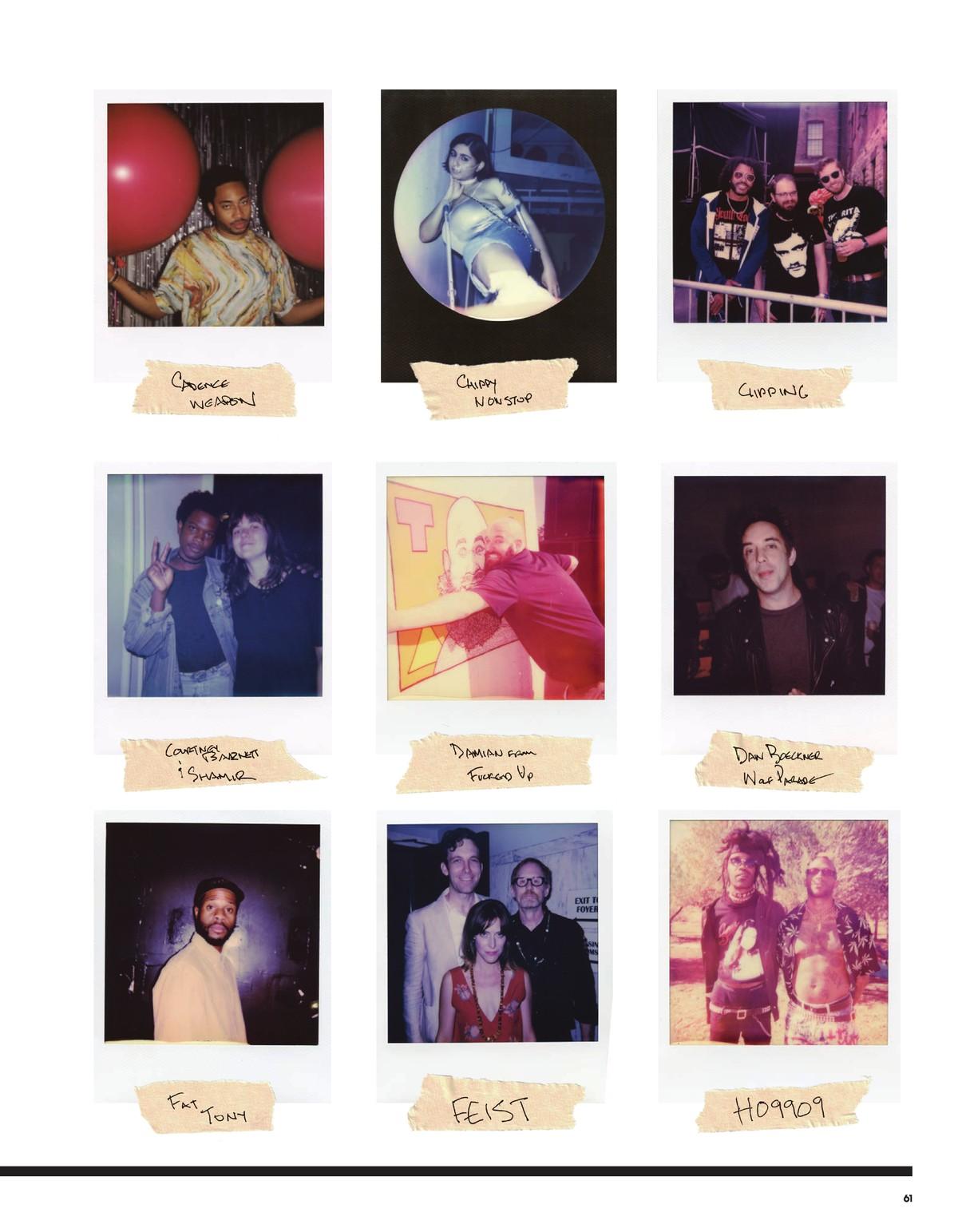IN AN INSTANT
Kate Killet’s Polaroid menagerie.


Kate Killet has a running bit “that I repeat too much,” about how she’s “the next Andy Warhol but, like, better.” She says this self-effacingly, belying the truth of her being the scene queen of Toronto, a heavy crown that comes with a sense of responsibility and gratitude. She loves her community of weirdos, and she works hard on its behalf. A relentless booster of all things local and DIY, Killet is the founder and president of POSIVIBEZ, the “interdisciplinary art collective” that serves as a beacon for Canada’s counterculture. In this capacity, and as a longtime journalist and photographer, Killet has taken it upon herself to document all the real wild ones who make up both the local and touring-through freak scene of Toronto. Her Polaroids serve as a visual history of the music that thrives, against all odds, in the shadow of monoculture. While primarily working in digital, Killet has always appreciated the derring-do required to work with film and for over 10 years has been showing up at shows and award events with a Polaroid camera in hand.

